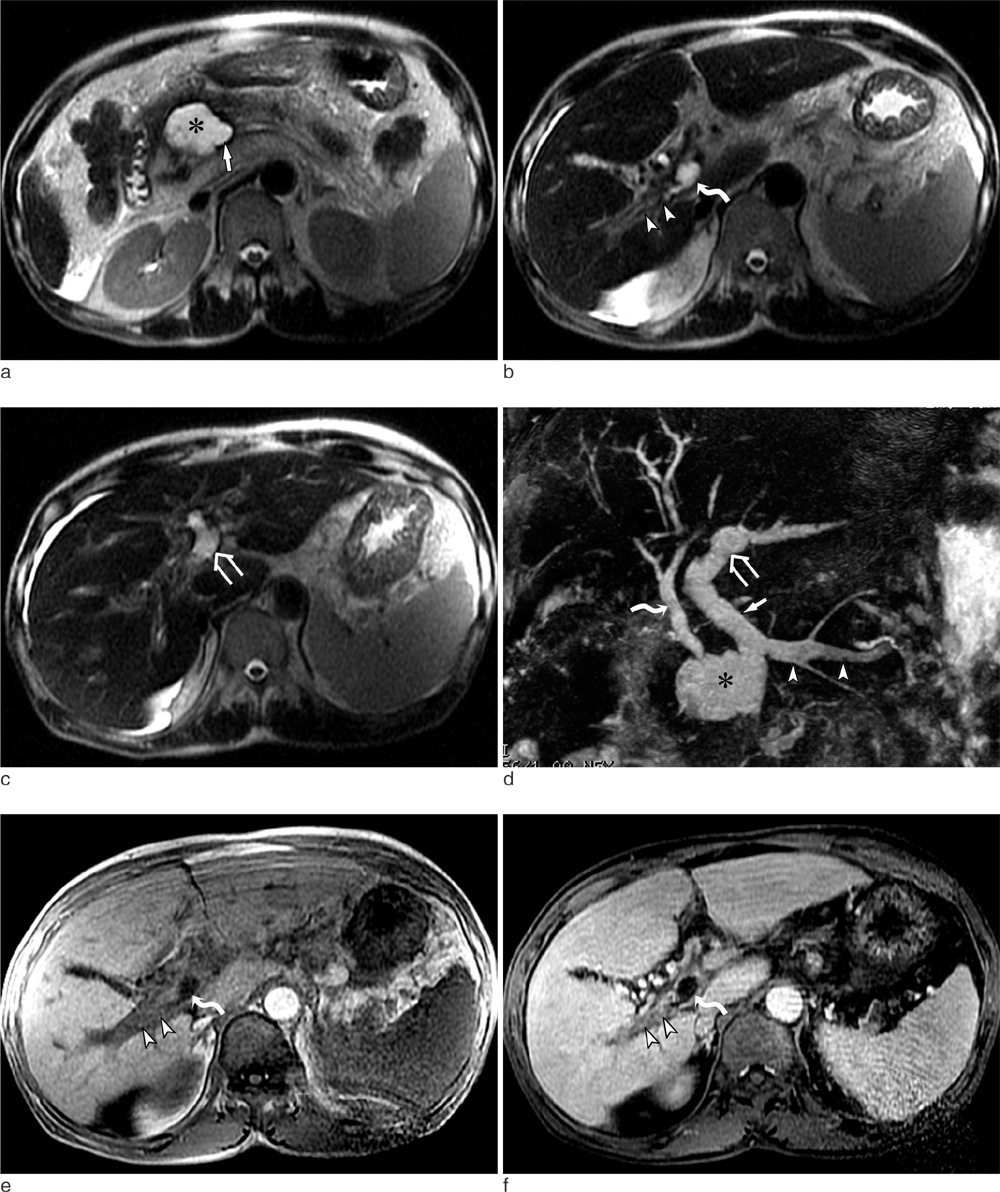J Korean Soc Magn Reson Med.
2014 Jun;18(2):171-175. 10.13104/jksmrm.2014.18.2.171.
Non-invasive MR Demonstration of the Fistula between Pancreatic Pseudocyst and Portal Vein: A Case Report
- Affiliations
-
- 1Department of Radiology, School of Medicine, Catholic University of Daegu, Daegu, Korea. yhlee@cu.ac.kr
- KMID: 2099894
- DOI: http://doi.org/10.13104/jksmrm.2014.18.2.171
Abstract
- Pancreatic pseudocyst rupture into the portal vein is a very rare complication and only three reported cases were confirmed using MRI. We report the case of a 50-year-old man with fistula formation between the pseudocyst and the portal vein, confirmed noninvasively by MRI. T2-weighted MR images and magnetic resonance cholangiopancreatography showed fluid signal intensity within the portal, superior mesenteric, and splenic veins, and a direct communication between the pseudocyst and the portal vein.
Keyword
MeSH Terms
Figure
Reference
-
1. Mortele KJ, Mergo PJ, Taylor HM, et al. Peripancreatic vascular abnormalities complicating acute pancreatitis: contrast-enhanced helical CT findings. Eur J Radiol. 2004; 52:67–72.2. Procacci C, Mansueto GC, Graziani R, et al. Spontaneous rupture of a pancreatic pseudocyst into the portal vein. Cardiovasc Intervent Radiol. 1995; 18:399–402.3. Riddell A, Jhaveri K, Haider M. Pseudocyst rupture into the portal vein diagnosed with MRI. Br J Radiol. 2005; 78:265–268.4. Yoon SE, Lee YH, Yoon KH, Choi CS, Kim HC, Chae KM. Spontaneous pancreatic pseudocyst-portal vein fistula presenting with pancreatic ascites: strength of MR cholangiopancreatography. Br J Radiol. 2008; 81:e13–e16.5. Dawson BC, Kasa D, Mazer MA. Pancreatic pseudocyst rupture into the portal vein. South Med J. 2009; 102:728–732.6. Dayal M, Sharmaa R, Madhusudhana KS, Gargb PK. MRI diagnosis of rupture of pancreatic pseudocyst into portal vein: case report and review of literature. Ann Gastroenterol. 2014; 27:173–176.7. Belli M, Jennings CM, Nakielny RA. Splenic and portal venous thrombosis: a vascular complication of pancreatic disease demonstrated on computed tomography. Clin Radiol. 1990; 41:13–16.8. Noh R, Kim HJ. A pancreatic pseudocyst-portal vein fistula closed by endoscopic pancreatic stent insertion. Gastrointest Endosc. 2010; 72:1103–1105.
- Full Text Links
- Actions
-
Cited
- CITED
-
- Close
- Share
- Similar articles
-
- Pancreatic Pseudocyst-Portal Vein Fistula: Serial Imaging and Clinical Follow-up from Pseudocyst to Fistula
- A Case of Pancreatic Duct-Portal Vein Fistulae in Pancreatic Cancer
- Intrahepatic Bile Duct Dilatation Caused by Pancreatic Pseudocyst: A Case Report
- A Case of Cystoduodenal and Cystocolic Fistula Complicated in Pancreatic Pseudocyst
- A Gastric Hemorrhage through the Fistula between Stomach and Pancreatic Pseudocyst with Ruptured Splenic Artery Pseudoaneurysm : A Case Report



